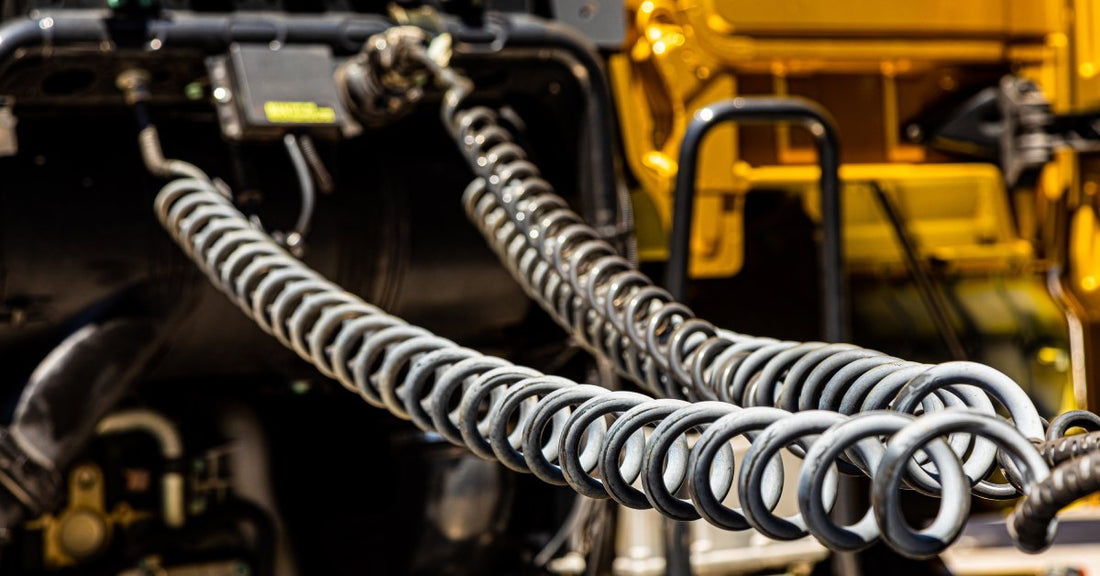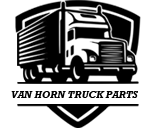
8 Common Signs Your Air Brakes Are Going Out
The air brakes on your semi-trucks control the vehicle’s ability to slow and stop. Air brake systems work by converting compressed air into mechanical force.
However, they are prone to wear and tear over time. If ignored, they may jeopardize the safety of your trucks and drivers. Look out for these common signs that your air brakes are going out to protect your vehicles and drivers from harm.
1. Reduced Brake Performance
A decline in brake performance compromises your ability to slow or stop the vehicle effectively. Operational changes in the system could indicate your air brakes need repairs. Failing to assess these problems can create dangerous situations for drivers.
Signs of Soft Pedal Response
If you notice that the brake pedal feels unusually soft or spongy underfoot, this is a sign of air leakage in the brake lines. Air leaks reduce the system’s pressure and minimize its stopping power. Routine inspections can help you identify leaks around hose connections and fittings.
Increased Stopping Distances
When the air brakes take longer than usual to halt the truck, internal components, such as the brake chambers or valves, may need servicing. Increased stopping distances could lead to lengthy maintenance issues and heighten crash risks, so monitor your systems before sending your drivers on a long transport.
2. Unusual Noises During Operation

An air brake system in good condition operates quietly and efficiently. Unusual noises during operation can indicate underlying problems in the system that require immediate attention.
Hissing or Air Leaks
A persistent hissing sound typically points to a major air leak. This could stem from cracks or damage in the hoses, tanks, or seals. Regularly test for air leaks using soapy water at connection points to pinpoint issues before they worsen.
Squealing or Grinding Sounds
If the brakes emit a squealing or grinding noise, it could suggest worn brake shoes or damaged brake drums. Neglecting these issues may force the metal components to grind against each other. To avoid further complications with the system, schedule a maintenance visit when you hear unusual sounds coming from the brakes.
3. Warning Lights and Dashboard Alerts
Dashboard alerts provide real-time notifications about the condition of your truck’s systems. Ignoring these warnings may result in failures that you could have prevented. If you’re unsure what these alerts indicate, read your vehicle’s user manual.
Brake Pressure Warning Light
When the brake pressure warning light illuminates, it could mean that the air pressure in one or more circuits has dropped below the safe operating level. This requires immediate maintenance to restore pressure levels.
ABS Light Activation
Modern air brake systems feature an anti-lock braking system (ABS) to prevent skidding. An active ABS warning light typically suggests an issue with the sensors or control module, which directly affects the vehicle’s braking performance. If these lights illuminate during a transport operation, drive to a safe location and schedule a maintenance visit immediately.
4. Irregular Brake Pedal Behavior
The brake pedal is a direct interface between the driver and the air brake system. Address irregularities in its behavior promptly to avoid problems on the road.
Pedal Pulsations
If the brake pedal pulses or vibrates during application, it may suggest uneven wear on the brake drums or problems with the brake linings. Not addressing this issue can exacerbate wear over time, so monitor the pedal’s behavior.
Stiff Brake Pedal
A brake pedal that feels unusually stiff and unresponsive could indicate a malfunctioning air compressor or excessive moisture accumulation within the air lines. Rather than applying more pressure to the pedal, check with a specialist to determine the cause of its stiffness.
5. Air Pressure Problems
Variations or fluctuations in pressure typically point to a deeper problem that could compromise the entire braking system. If the pressure drops below the required level (usually 100–125 psi), the brakes may not function properly, and the spring brakes could engage automatically as a safety measure. Prevent structural damage by understanding the signs that your air brakes are going out and assessing the damage.
Rapidly Depleting Air Tanks
Air tanks that drain too quickly indicate an air leak in the system or a faulty compressor. Conducting regular inspections and pressure tests helps drivers detect the issue.
Difficulty Building Pressure
If the system struggles to reach the necessary pressure levels for operation, the air dryer or compressor may require maintenance. Routinely clean the housing in the air dryer and replace the compressor filters to mitigate buildup in the system.
6. Uneven Brake Application

Air brake systems rely on even application across all wheels for optimal performance. Deviation can negatively affect the safety and controllability of the vehicle.
Skewed Stopping
When the truck pulls to one side during braking, this imbalance indicates malfunctioning brake chambers, misaligned pushrods, or uneven wear on the brake shoes. Realigning these components restores balanced stopping power.
Delayed Response on One Side
If brakes on one side lag compared to the other, it can result from valve issues or clogged air lines. Prevent strain on singular components by confirming that both sides of the vehicle function uniformly.
7. Excessive Moisture in the System
Moisture buildup can hinder the efficiency of an air brake system over time. Addressing it promptly can prevent system-wide failures, especially during seasonal changes or after a heavy storm.
Frozen or Corroded Air Lines
Excess moisture accumulating in air lines can freeze during cold weather or accelerate corrosion. As a preventative maintenance measure, installing or servicing the air dryer can mitigate this issue.
Reduced Air Pressure Efficiency
Moisture diminishes the effectiveness of air pressure generation and storage. This could lead to suboptimal brake performance. Draining moisture from air tanks routinely is a simple yet impactful maintenance step that can improve air pressure efficiency.
8. Physical Damage to Brake Components
Visible damage to any part of the air brake system negatively affects the safety of the vehicle. Don’t ignore these visual indicators! Determine if you’ll need to repair or replace these components in your semi-truck’s air brake system.
Cracked Hoses or Lines
Physical cracks or abrasions on brake hoses and lines restrict airflow and create leak points that compromise pressure. Replacing damaged components promptly prevents further deterioration.
Worn Brake Shoes or Drums
Inspect the brake shoes and drums for signs of wear, such as thinning linings or scoring. By doing regular checks, you can catch and address abnormalities.
When these components fail, replace them before they cause severe damage to other parts in the system or create hazardous situations for your drivers. Browse our online collection of semi-truck air brake parts at Van Horn Truck Parts, and contact our team for support today!

